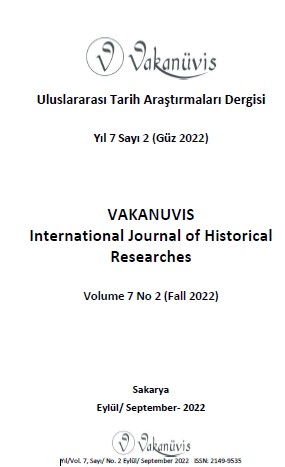Basra Körfezi’nde Portekiz Hâkimiyetinin Sonu: Safevîİngiliz İttifakı
The End of Portuguese Dominance in the Persian Gulf: Safevid-English Alliance
Author(s): Emrah NakiSubject(s): Military history, International relations/trade, 16th Century, 17th Century
Published by: Serkan YAZICI
Keywords: Spain; Portugal; England; Safavid; Hormuz;
Summary/Abstract: Portuguese domination of the Persian Gulf for more than a century began in 1507, when Afonso de Albuquerque arrived in Hormuz. It lasted until 1616, when the first British ship entered the port of Cask in the Gulf of Oman, and 1622, when the Portuguese garrison in the fort of Hormuz surrendered to Shah Abbas' besieging forces. The capture of Hormuz from the Portuguese began when the huge Safavid army under the command of Imam Kulu Khan landed and marched on the city under the protection of ships belonging to the British East India Company. Without British naval assistance, Hormuz, which was protected by the Portuguese navy, could not be captured by the Safavids. As the Safavids began to besiege the fort, the British devoted their efforts to sinking the galleons anchored beneath the fort walls. They were so successful in this that they sunk or burned them all in the first week of April. In the short six-year period from 1616 to 1622, British East India Company ships appeared in the Persian Gulf as Portugal broke its maritime dominance. This situation showed the signs of British domination under the leadership of the East India Company, although it dealt a great blow to the Ocean trade of Portugal, which came under Spanish rule in 1580, with the Hormuz-Goa- Lisbon route. After the 1618 Treaty of Serav, which resolved the border problems with the Ottomans, Shah Abbas, who turned his direction to the Gulf easily, succeeded in establishing dominance in the Persian Gulf by taking Comorão (Bender Abbas), Qeshm and Hormuz from the Portuguese, respectively. This study has been prepared in the light of Portuguese and Spanish Archival Documents, and the archives of "Torre de Tombo" and "Biblioteca Nacional de España" are important in terms of containing primary sources in research on the Safavid State.
Journal: Vakanüvis- Uluslararası Tarih Araştırmaları Dergisi
- Issue Year: 7/2022
- Issue No: 2
- Page Range: 924-950
- Page Count: 27
- Language: Turkish

